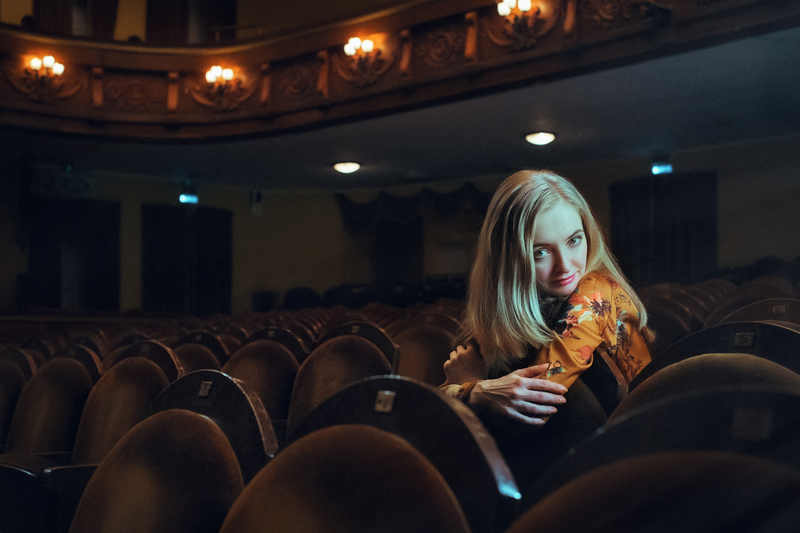Of Horses and Men Film Review

Viewers of Alan Ball's HBO series "Six Feet Under" will be familiar with the darkly comic tone and form of Benedikt Erlingsson's first feature film, "Of Horses and Men". Erlingsson uses a similar episodic structure in which the opening sequences of his film end in some creature's unfortunate end. While there are several gasp-inducing moments, the effect is far from depressing. Writer-director Erlingsson explores the interdependence of horses and people and finds the two species are not as different as one might think.
"Of Horses and Men" is set in a village in Iceland's stunning and sparsely populated highlands. The central human characters are the town's most sought-after bachelor Kolbeinn (Ingvar Eggert Sigurosson) and his paramour Solveig (Charlotte Boving). The viewer's first glimpse of Kolbeinn, however, is his reflection in the eye of a mare. This signals the importance of the horse's point-of-view but also the motif of reflection which is reiterated throughout the film. As Kolbeinn rides to a luncheon appointment with Solveig, the villagers observe the event through binoculars. A fact Kolbeinn and Solveig are cognizant of due to the light glinting off the glass lenses.
The mating ritual played out between Kolbeinn and Solveig is echoed in the behavior of their horses. Disaster occurs when Solveig's stallion breaks out of his enclosure and copulates with Kolbeinn's mare with the humiliated suitor still in the saddle; an event witnessed by the entire village using said binoculars. The film considers the dire punishment meted out to the horses for merely behaving in the same manner as their owners.
The most remarkable sequence follows immigrant Juan Camillo (Juan Camillo Roman Estrada) as he experiences his first ride aboard an Icelandic horse. Separated from his group, he becomes lost in a blinding snowstorm. On the cusp of freezing to death, he slashes open the belly of his horse and climbs inside. Erlingsson switches to an overhead shot as Juan Camillo empties the horse's gut. This serves to minimize the gore but also turns the characters into more abstract figures, blurring the line between species. Juan reenacts his birth in reverse, entering the horse's womb in order to live.
"Of Horses and Men" is set in the present-day but there is a sense of timelessness that permeates the film. One senses that the village disputes concerning property rights and male/female relationships have played out again and again over the centuries. During the annual round-up of horses, one villager remarks their method has been "good enough for a thousand years"; and for a thousand years the horses have been silent witnesses to the foibles of their human companions.
"Of Horses and Men" had a US release in 2015. The film is in Icelandic with English subtitles. "Of Horses and Men" is unrated and suitable for mature audiences. It is available on DVD and Amazon Video; I watched the film at my own expense. Review posted on 2/2/2018.
"Of Horses and Men" is set in a village in Iceland's stunning and sparsely populated highlands. The central human characters are the town's most sought-after bachelor Kolbeinn (Ingvar Eggert Sigurosson) and his paramour Solveig (Charlotte Boving). The viewer's first glimpse of Kolbeinn, however, is his reflection in the eye of a mare. This signals the importance of the horse's point-of-view but also the motif of reflection which is reiterated throughout the film. As Kolbeinn rides to a luncheon appointment with Solveig, the villagers observe the event through binoculars. A fact Kolbeinn and Solveig are cognizant of due to the light glinting off the glass lenses.
The mating ritual played out between Kolbeinn and Solveig is echoed in the behavior of their horses. Disaster occurs when Solveig's stallion breaks out of his enclosure and copulates with Kolbeinn's mare with the humiliated suitor still in the saddle; an event witnessed by the entire village using said binoculars. The film considers the dire punishment meted out to the horses for merely behaving in the same manner as their owners.
The most remarkable sequence follows immigrant Juan Camillo (Juan Camillo Roman Estrada) as he experiences his first ride aboard an Icelandic horse. Separated from his group, he becomes lost in a blinding snowstorm. On the cusp of freezing to death, he slashes open the belly of his horse and climbs inside. Erlingsson switches to an overhead shot as Juan Camillo empties the horse's gut. This serves to minimize the gore but also turns the characters into more abstract figures, blurring the line between species. Juan reenacts his birth in reverse, entering the horse's womb in order to live.
"Of Horses and Men" is set in the present-day but there is a sense of timelessness that permeates the film. One senses that the village disputes concerning property rights and male/female relationships have played out again and again over the centuries. During the annual round-up of horses, one villager remarks their method has been "good enough for a thousand years"; and for a thousand years the horses have been silent witnesses to the foibles of their human companions.
"Of Horses and Men" had a US release in 2015. The film is in Icelandic with English subtitles. "Of Horses and Men" is unrated and suitable for mature audiences. It is available on DVD and Amazon Video; I watched the film at my own expense. Review posted on 2/2/2018.
You Should Also Read:
Rams Film Review

Related Articles
Editor's Picks Articles
Top Ten Articles
Previous Features
Site Map
Content copyright © 2023 by Angela K. Peterson. All rights reserved.
This content was written by Angela K. Peterson. If you wish to use this content in any manner, you need written permission. Contact Angela K. Peterson for details.


